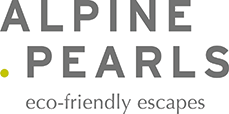The Vézzena cheese has a lightly hard and cooked texture. It is produced from the fresh cow milk during the alpine pasture season (summer). It is partly skimmed and the taste is very savory and aromatic. This is due to the particular perfumed milk that is made only in the alpine farms, better known in Italy as “malghe” and that is what makes Vézzena a very special cheese.
There are three different types of Vezzena, the fresh, the medium-aged and the aged cheese. The last one is particularly sought after for the exquisite organoleptic properties.
The Vezzena cheese is not the only one that is made in the local farms of Alpe Cimbra. For instance, there is a wide variety of dairy local products like ricotta, tosella, aromatic caciotta cheese, yoghurt and the medium or old aged cheeses. So… a lot to taste then!
If you are fascinated by alpine dairy productions find out more about the didactic farms of Alpe Cimbra where you may become an alpine dairy farmer for one day!
VEZZENA… THE CHEESE OF THE MAJESTIC TASTE
It used to be produced hundreds years ago in the highland that named it - Altopiano del Vezzena - . It is a tradition that has gained prestigious labels as DOP and Slow Food product.
There has to be a reason if a modest man as the emperor Franz Josef from Austria wouldn’t lack some Vezzena cheese in his diet. The
reason being… its slightly bitter taste and buttery texture that make it one of the most respected antique cheeses in the Trentino Alto Adige region.
Goodness comes from the grazing lands
The Vezzena cheese is produced in the alpine farms called malghe of Lavarone, Lusern, Folgaria in the provice of Trento. A slightly different version is produced in the province of Vicenza in the Enego community. It is made with the summer milk obtained by the cattle pasturing the mentioned areas only from June to September. The particular taste and the organoleptic properties deriving from the herbs grown in the Vezzena grazing lands lead Vezzena to be so much sought after. The texture is semi hard. The production follows the usual procedure used to make partly-fat alpine cheeses.
The production
The milk milked at night is poured in big pots or containers and let it cool throughout the night. The next morning the fresh milk coming from the morning milking is added together with the cow rennet to the one of the day before. After the coagulation and cooking (at a temperature of about 45°C), the curd is ready and placed into wooden moulds and let it sit. At night, the moulds are removed and the new obtained shapes are deposed into wooden containers - fascera –. They are moved into in the cool area called “fescura”, a damp and warm room, for about 4 days. The next step is the salting, for about 10 days, and then the seasoning during which the cheese shapes are cleaned and marinated with linseed or seed oil.
The 4 seasons
There are several types of Vezzena depending on the duration of the seasoning: the fresh, the medium aged, the old aged and the very old aged known as stravecchio (more than 24 months of seasoning). The texture is semi-hard and granulose, feature that is highlighted in the old aged and stravecchio versions. The colour is yellow. The taste is pleasantly bitter, not too spacy and characterized by differences in the taste deriving from the cheese seasoning duration and also the periods of the grazing lands.
Certified Excellence
Accompanying meals, or grated, the Vezzena used to be the only cheese to flavor traditional soups of the region like the canederli. Recently, this Trentino excellence has gained the significant label DOP, thus strengthening the relationship with its territory, besides a detailed guideline of production guaranteeing its specificity. Yet, the Vezzena cheese, exclusively produced by the milk coming from cows pasturing the alpine grazing lands around the alpine farms known as malghe is certified as a Slow Food product. The M letter on the cheese graphic differentiates it from the others. In order to safeguard its genuineness, cattle have to be bred in the alpine grazing lands and fed only with row materials coming from the land. Industrial cattle food and OGM are forbidden.
Where to purchase the Vezzena cheese?
LOCAL PRODUCERS












